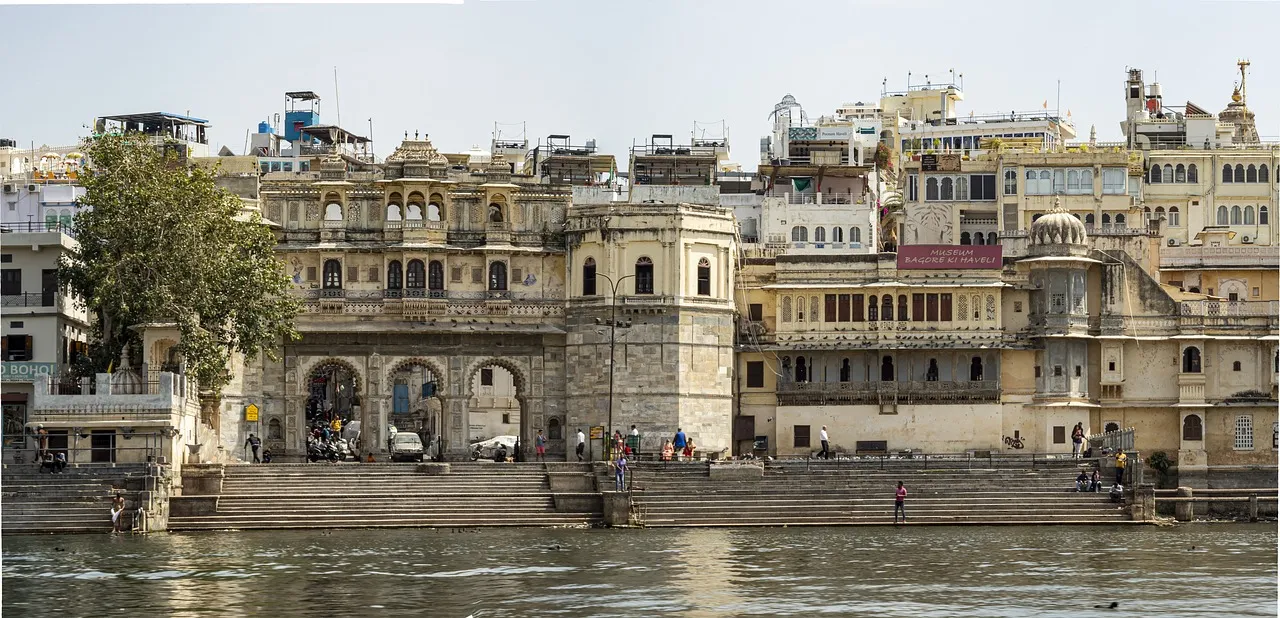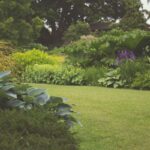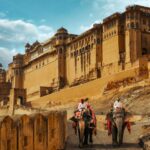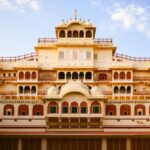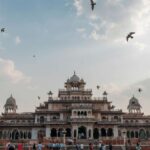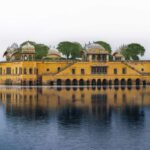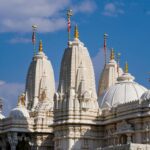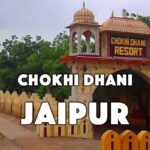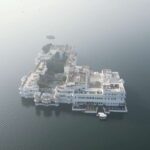Rajasthan is one such Indian State that still holds its traditions and culture very close. Even with the extreme modernization and western influence, Rajasthan has successfully retained its Indian touch and the age old traditional values. Udaipur in Rajasthan is one of the places where you can enjoy the true essence of Rajasthan. Rajasthan was mostly about its Rajasthani Royal families and the majestic creations by them. You can find many such structures in Rajasthan till date.
The Bagore ki Haveli Udaipur is one such location. However we all know Rajasthan is known for its massive Havelis, Forts and Palaces. So what is so special about the Bagore ki Haveli? basically this Haveli has been transformed into a museum that displays Rajasthan and its culture at its best. So if you are someone who is inclined to find out more about Rajasthan then this is the place for you. Moreover you will get an insight about the age old lifestyle of the royal families by visiting this beautiful Haveli.
I can vouch that the Bagore ki Haveli Photos does not do justice to how beautiful it looks in reality. Also you need to experience something from up close to actually get the essence of that place right? So don’t waste your time and hurry up and pack your bags to make a visit to the Bagore ki Haveli Udaipur. Keep on reading this article because here I have jotted down every important piece of information for you that would help in planning a successful visit to this location.
Bagore ki Haveli Udaipur
Location:
Gangaur Ghat Marg, Udaipur, Rajasthan
Entry tickets:
Entry fee for Indians is Rs. 60 for adults and Rs. 30 for children between 5 years to 12 years of age. For foreigners entry fee is Rs. 100 for adults and Rs.50 for children. Video cameras and still cameras are charged Rs. 50 extra.
Timings:
9:30 am to 5:30 pm on all days.
How to reach Bagore ki Haveli
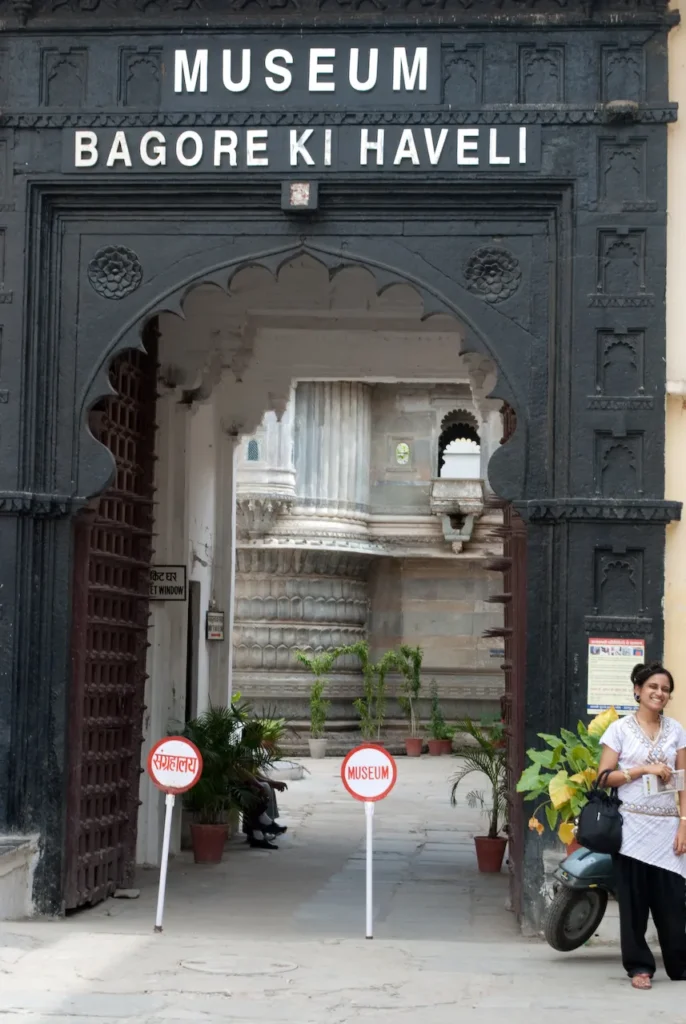
By train
The Udaipur Railway station at a distance of 2.4 km is the nearest railway station.
By flight
Maharana Pratap Airport is the nearest airport at a distance of 23.3 km. You can take buses, cabs or auto rickshaws from there to reach the Haveli.
By road
The Haveli is only 1.5 km away from the Udaipur city centre and that makes it easily accessible through roadways. You can get private as well as government operated buses from nearby cities or locations. Also you can hire a car or drive your own vehicle to reach the Haveli.
Read More: Jaisalmer Fort Timings, Entry Fee, History, Ticket Price
Best time to visit Bagore ki Haveli
The best time to visit Rajasthan is always in winters. Winters would be the best time to explore the Bagore ki Haveli Udaipur. The months from September to March are the ideal months for visit. During this time the temperature ranges around 28 degrees which is pleasant. It is advisable to not visit here during the summer months. Rajasthan itself becomes extremely hot and humid and with temperatures rising very high it would not be a comfortable time to explore the place well.
History of Bagore ki Haveli
The magnificent Bagore ki Haveli is built by Shri Amarchand Badwa. He was the prime minister of Mewar Kingdom during 1752 to 1778. After his death the Haveli came under the Mewar royal family and became the residence of one of the relatives of Maharana, Nath Singh. The Haveli was further extended by Maharaj Shakti Singh in 1878. After he extended the Haveli by building a triple arched gateway to the Haveli, the Haveli came to be known as the Bagore ki Haveli.
It was under the possession of the Mewar state until independence of India. After that, the Haveli came under the control of the Rajasthan government as a space to house the government employees. Until 1986 the Haveli was ignored to a lot of extent and then after forty years restoration works started here. The Haveli was handed over to the West Zone Cultural Centre for the restoration work and they turned the Haveli into a museum.
Moreover, even though this Haveli has been turned into a museum, the West Zone Cultural Centre has maintained the royal look of the Haveli. The same vintage architectural style has been kept and modern yet local traditional skills were applied for the renovation purpose. Traditional materials like lime mortar and lakhori bricks are used for this. The doors, windows were repaired and restored. Some of the damaged ones have been replaced with new ones as well.
Architecture of Bagore ki Haveli
The Bagore ki Haveli is a splendid spot that reflects how artistically this place is made. This beautiful Haveli would be an ideal spot to visit for the people who have an inclination towards art and artistic elements. With each and every corner you will be able to notice the intricate craftsmanship. The Haveli reflects the architectural style of old Mewar culture. Furthermore, there are huge balconies, ornate courtyards, elegant archways and fountains inside the Haveli.
The Haveli is huge with almost 138 rooms. You can actually get an insight about the kind of life that the royal families used to enjoy living in those beautifully crafted rooms. The walls are carved with utmost precision. Along with that there is beautiful glass and mirror work done on the walls that looks majestic. The alluring murals and paintings that adorn the walls also take the beauty of this place a notch higher. Moving on you can also visit the rooms of the royal ladies. The main attractions of these rooms are the tinted colourful windows. Furthermore, there are two beautiful coloured peacocks made with glass mosaic and that is an intricate piece of art that you need to check out there.
Further as you enter the Haveli there is a sprawling courtyard. The highlight of this courtyard is the fountain shaped in the form of a lotus. Also there are three Chowks in total in the Haveli which are known as Neem Chowk, Kuan Chowk and the Tulsi Chowk. The Neem Chowk is located on the first floor while the Kuan Chowk is located on the ground floor of the Haveli.
Inside the Haveli
Kuan Chowk is the well court. This was the place where most of the daily chores of the staff of the Haveli were done. On the first floor Neem Chowk is one of the most attractive sections of the Haveli. It has beautiful brass doors and also has a stage for dance performances. The royal men of the family used to have a good time here enjoying the performances. This was basically a place to display various dance and art forms. Next is the Tulsi Chowk. This was the main area designated for the royal princesses. This area also served as the women’s quarter. Various occasions and festivals were celebrated here by the royal ladies here with dance performances like Ghoomar. At present this serves as an area where beautiful women’s attire and men’s turbans are displayed for the visitors.
Furthermore, there was a separate designated area for the royal men as well known as the Kanch Mahal. As the name suggests Kanch Mahal means a mirrored mahal. There was also the Durrie Khana and these areas were only accessible by the men of the royal family. Another important section was the Diwan-e-Khas which is by far the largest chamber in the whole Haveli. At present this space has been turned into the office of the Director of West Zone Cultural Centre.
Chambers inside the Haveli
Moving on there were separate rooms for the women of the Haveli namely the Shringaar Kaksh, and the Sangeet Kaksh. As the name suggests Shringaar Kaksh is the dressing room for the ladies. This was the room used by the royal ladies to dress up in their attires. It also has a massive trunk made of wood where the outfits were stored. You can also find the Itra Daan here which is the fragrance bottle that the royal ladies used to apply. Also there is the Sangeet Kaksh which was the music room for the royal ladies. Various instruments like Santoor, Nagada, Chang, Sarangi, Dholak etc were played by the royal women here. Next is the Manoranjan Kaksh and as the name suggests this room is for the entertainment purpose of the royal men. The royal men would indulge in playing various board games here for their entertainment.
Bagore ki Haveli Museum
Bagore ki Haveli is mostly turned into a museum at present after its renovations. While keeping the royal touch and the originality of the structure and the architecture the museum has been made inside. This museum is the main attraction for most of the people visiting this Haveli. The museum has been very well articulated and it displays some of the best elements of Rajasthan. There are mainly 5 sections in the museum like the Main Haveli, the Puppet Museum, Weapon Museum, Turban Museum and the Wedding Depiction Museum.
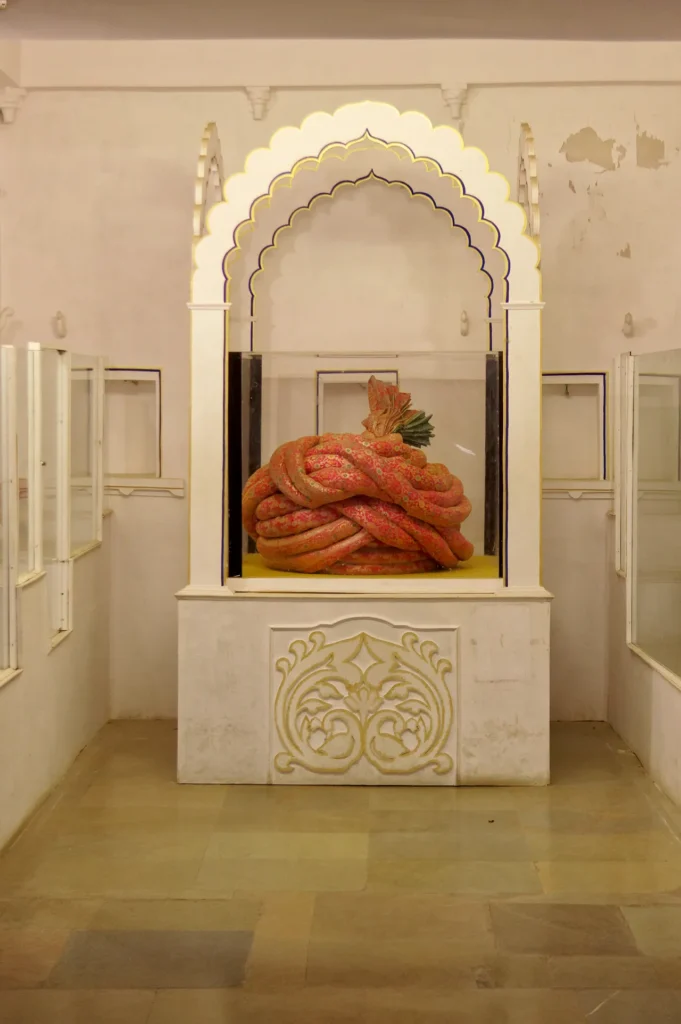
Main Haveli Museum
The Haveli museum takes the most amount of space and it is like a living museum. The terrace view from the Haveli is breathtaking overlooking the Pichola Lake. You can also spot other landmarks in the city like Taj Hotel, Oberoi Udaivilas Palace Hotel, and City Palace etc from here. The Haveli leads to different rooms that belonged to different Royal members of that time. These were the bathrooms, dressing rooms for ladies, bed rooms, living rooms, worship rooms, recreation rooms etc.
The rooms still have that old world charm of the days gone long back. With old styled beds and beautiful cushions the bedroom is massive and looks majestic. The dining rooms also have beautiful cushions and rugs on the floor. There are some puppets here as well sitting around and that gives an even natural feel to these rooms. You can even visit the kitchen area here and see different earthen pots and utensils used in those times.
Paintings
Furthermore, the lobby of the Haveli looks exquisite with beautiful paintings. The paintings have scenes depicting the women doing various household chores, view of the Pichola Lake, War preparations and many other scenes from the royal days. You can also spot a painting where the royal family hierarchy is depicted. Of other things you can also see some items used by different kings of the Rajput dynasty like the royal attires, hookahs, jewellery boxes, dice games etc.
One of the latest additions and site of attraction in the Haveli is the miniature model of the Bagore ki Haveli. You can also find various other sculptures of the Victory Tower of Chittorgarh, Eiffel Tower, Taj Mahal, Leaning Tower of Pisa etc. In the basement of the museum beautiful artworks are displayed. One of the highlights is the Elephant Chariot used by the king of Jhalawar. In the lobby of the Haveli you can find a beautiful swing hanging from the top of the roof. It showcases how the royal women used to spend their times swinging at this spot.
Puppet Museum
The puppet museum is a favorite one for the kids mostly. But it would be a treat for the elders as well. This museum displays various colourful puppets and other decorative items. Most of the exhibits here are handmade. On one side of the room there is a replica of the kings’ courtroom. It has the puppets of the king, queen and other courtesans and ministers and that looks beautiful. Furthermore, Puppets of various animals like elephants, horses are also found here. Not only exhibits, you can even buy puppets from here. Puppets are an integral part of Rajasthani heritage. It is a must visit museum here.
Weapon Museum
This is a smaller museum located just beside the entrance. You can spot different weapons here that were used by the kings in the early times during war. Various arms and ammunition are displayed in this section which is interesting to look at.
Turban Museum
The Turban Museum is located on the ground floor of the main Haveli. Here you can find turbans from different states of India like Rajasthan, Punjab, Gujarat, and Haryana. It also gives an insight about what the turbans mean to the people of these states and the cultural significance of turbans as well. You can also notice the variety in turbans here that varies from one state to another. The Rajasthani turbans are vibrant while Punjabi turbans are plain etc. This would be like getting an insight about various cultures and the style of their dressing. It would be a lot of fun for a person to visit this museum.
Wedding Depiction Museum
This museum is like a depiction of marriage ceremonies. Here you can find puppets or dolls that are displayed and also various rituals of wedding are emphasized. This is one of the interesting sections in the museums.
Bagore ki Haveli dance show
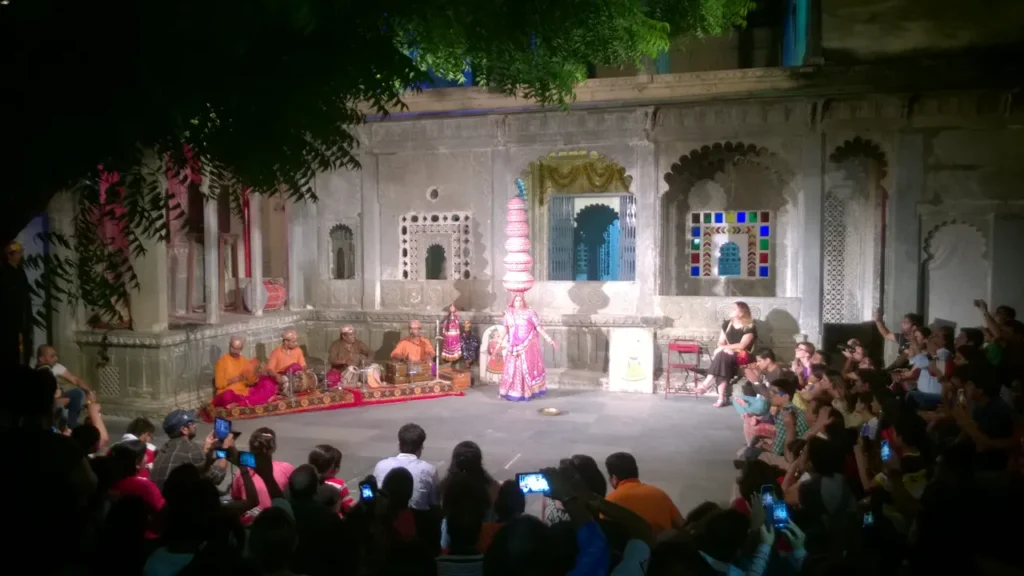
Entry fee for dance show:
For Indians it is Rs. 90 for adults and Rs. 45 for children. And for foreigners the entry fee is Rs. 150 for adults and Rs. 75 for children. For any cameras additional charges of Rs. 150 to be paid.
Timings for dance show:
Bagore ki Haveli dance show timings are 7 pm to 8 pm on all days. Tickets for the dance show are available from 6:15 pm every day.
Special attraction of the Bagore ki Haveli is this special dance show programme known as the Dharohar Dance Show. This show is conducted every day for an hour and it attracts a lot of visitors on a daily basis. The show takes place in the courtyard of Neem Chowk. Special seating arrangements are made for the audience on the floor. The arrangements are made as close to the traditions and vintage charm. A mattress is placed on the floor in front of the stage on the sides of the terrace and people can sit there and enjoy a beautiful view of the performances. The programme focuses on traditional Rajasthani Folk Music and Dance.
This is like a set show that is very well choreographed and planned. It begins with a brief given about the whole show. And later it moves on to the main performances. The programme starts with a religious song along with blowing of the conch shell and beating of drums. That in itself sets up the whole mood and ambience for the show.
Dance performances
The show is very well choreographed, rehearsed and executed by very talented and skillful artists and performers. All of them wear traditional Rajasthani outfits that look very colourful and gorgeous. The performances are supported by trained musicians who play instruments like table and harmonium. The first performance is where the dancer balances herself with brass pots on her head. She sways with the music along with the balancing act. It looks exciting and thrilling at the same time. The precision and practice with which these artists perform deserves a huge round of applause. This dance form is known as the Chari Dance.
Furthermore it is followed by the Terha Taal Dance. This is the performance where the dancers perform in a group with manjiras or bells in their hands. They sway and make the sound with the bells in utmost coordination according to the beats of the music. After a point they even dance with a knife in their mouth and brass pots on their hands along with the manjiras in hand. This dance form requires a lot of skills and balance and the artists are well equipped with their talents. It is truly a sight to enjoy.
The next performance is the Gorbandh Dance form. Here the women twirl in heavy ornaments originally worn by camels and dances following the rhythms of the music.
What’s more?
Next comes the Rajasthani Puppet Show that is a favourite amongst all the kids. Also puppet shows have always been an integral part of Rajasthani culture. This is like a humorous performance which the audience enjoys to their fullest.
Moving on, there is a Ghoomar dance performance. Now after the successful portrayal of the Ghoomar song and dance in so many films and a dedicated song on this dance form, this is a favourite performance among the audience. The women dancing in circular twirling in a group look alluring. It is an enjoyable performance for sure.
And the concluding performance is the Bhavani Dance which is the most intriguing of it all. It has various sections where the dancers use various props and keep on dancing. Here the dancers add earthen pots on their head that go from 2 pots to 12 pots at times. They even dance on broken pieces of glasses or balance them on brass plates and so on. This is one of the most professional and well executed performances in the dance show.
With that the Dharohar dance show ends. The purpose of this dance show is to highlight the culture of Rajasthan and restore the Rajasthani folk songs and dance forms. With skilled performers this is a site to enjoy and is very interesting to witness. I would request that this show is a must watch whenever you visit Bagore ki Haveli. Otherwise you will surely miss out on a beautiful and huge chunk of Rajasthani culture.
Concusion
A visit to the Bagore ki Haveli Udaipur can be enriching, entertaining, thrilling as well as exciting all at once. A place like this has a lot to offer to the visitors. Places like these are just ideal to understand the socio-cultural set up of a particular area. I am sure after visiting the Haveli you would have a better idea about Rajasthan and its culture. Ranging from the beautiful architecture to mesmerizing views, age old structures, royal touch and the traditional set up everything will melt your heart. A museum specially designed inside a Haveli is one of the most exciting things in Bagore ki Haveli. The added bonus is the dance show here.
As culturally enriching as it can be, you will be leaving the place with your heart full. So don’t think twice before visiting this place in Udaipur. I am sure you are definitely going to enjoy this experience e. Do let me know if you have visited any other havelis like this in Udaipur or Rajasthan. And also let me know when you are going to visit here. I would love to know if this article was helpful in planning your amazing trip to the Haveli. Happy visit.
